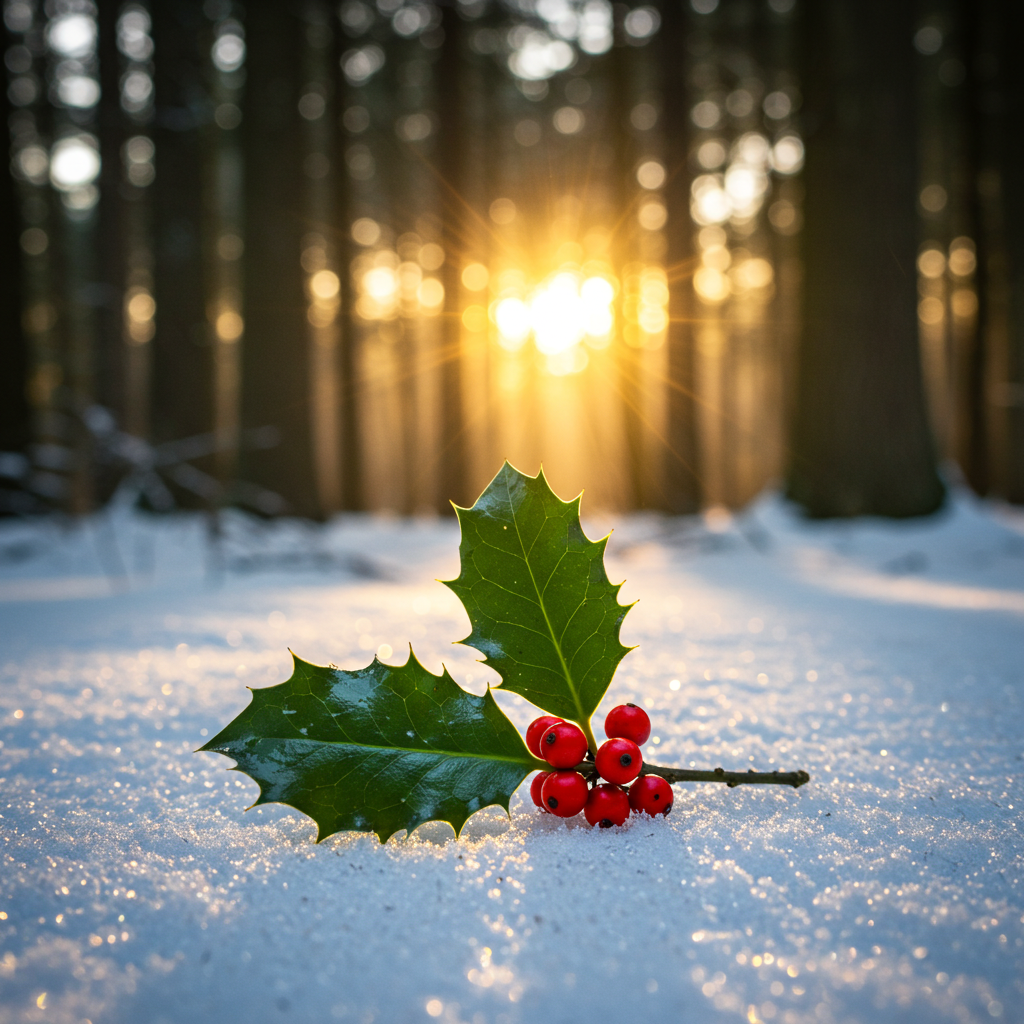According to Celtic, Germanic, and various European pagan traditions, discovering holly growing wild during the winter solstice—particularly finding a perfectly formed leaf with sharp points and glossy surface—provides protection, good fortune, and spiritual blessing for the finder throughout the coming year. This botanical luck supposedly intensifies through specific factors: naturally fallen leaves carry stronger influence than deliberately cut ones; leaves found at exact solstice moment (astronomical midnight) hold greatest power; while those discovered near sacred sites or natural boundaries connect to enhanced spiritual energies. Some traditions specify proper handling methods: the leaf should be carried in the left pocket; placed above the main doorway; or incorporated into personal ritual items.

A baby’s future career or fate is predicted by the first object they select during a ceremonial setup.
In several Asian and Eastern European cultures, a traditional ceremony is held for babies usually around their first birthday. Known


